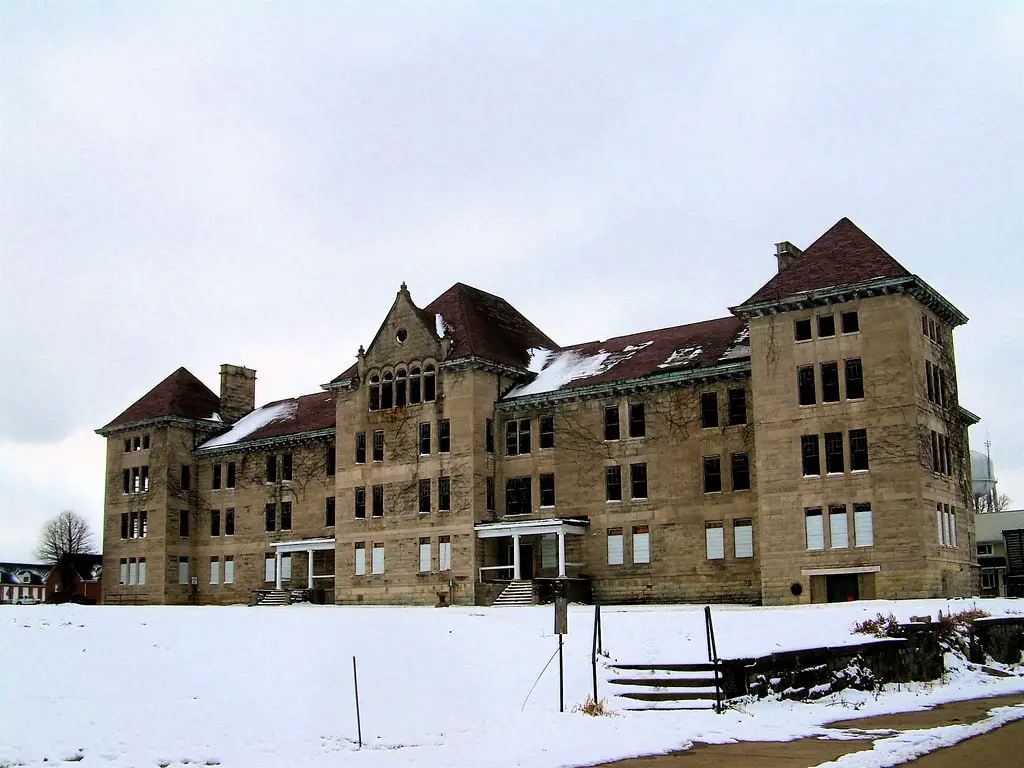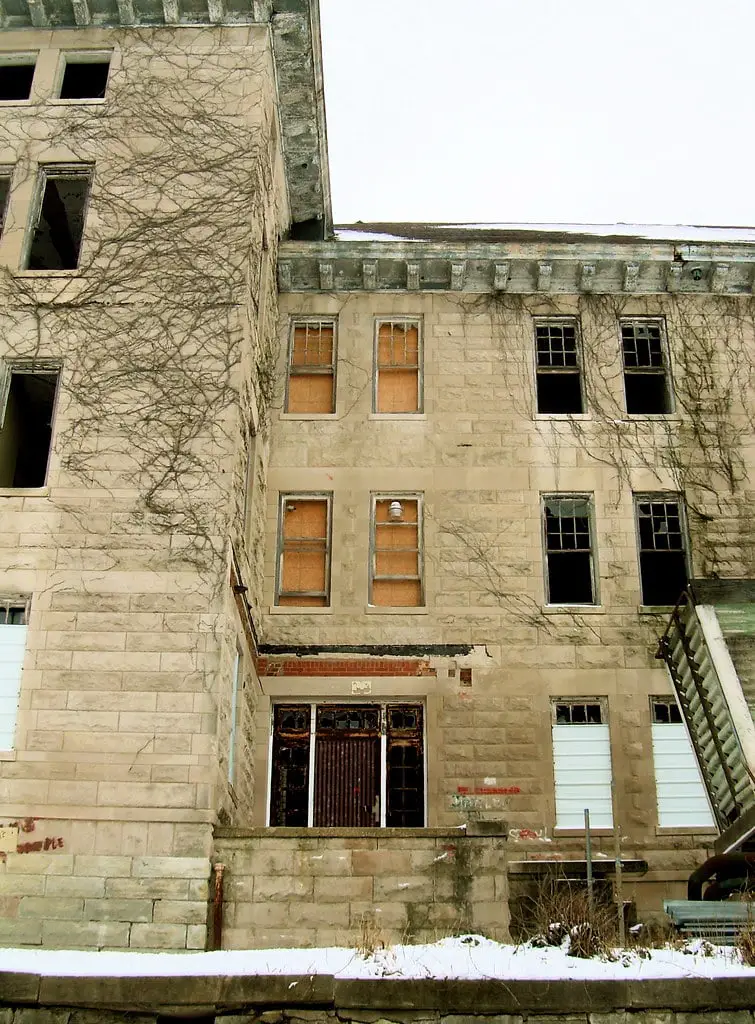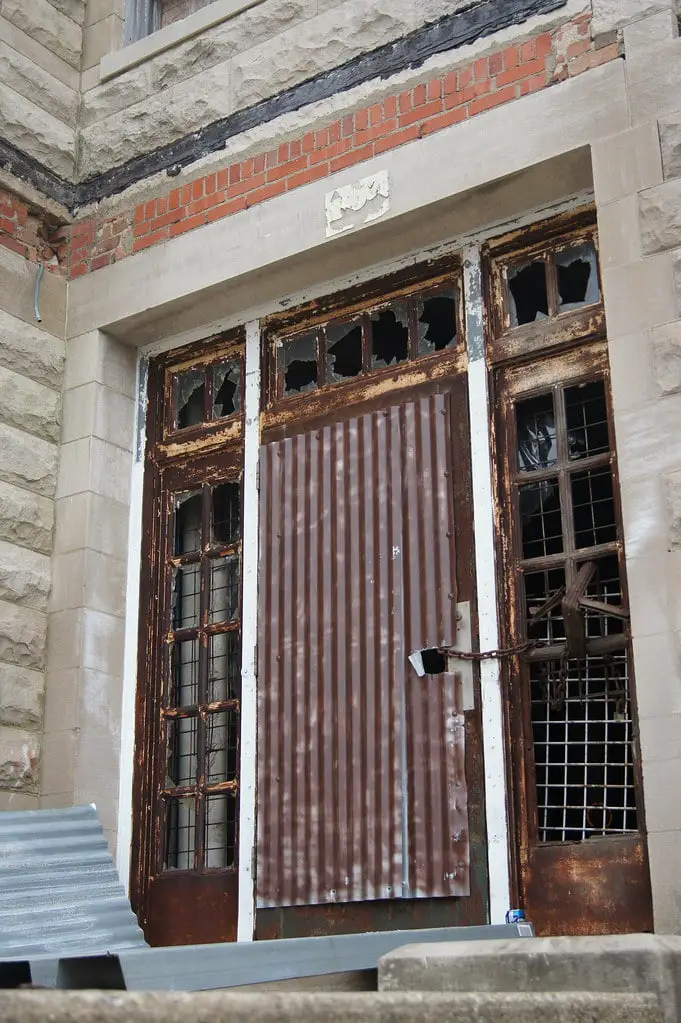A Humble Beginning
The remnants of the once-hopeful Peoria State Hospital are located in Bartonville, near Peoria, Illinois.
Established in 1895 as the 'Illinois Asylum for the Incurable Insane,' this institution represented the resilience and vision of its founders.
The Illinois General Assembly played a crucial role in the hospital's creation. Governor John Altgeld appointed a commission to select the site, and Bartonville became the chosen location for this ambitious project.
The first building, completed in 1897, faced structural issues due to abandoned mine shafts and was never used. This initial setback didn't stop the hospital's mission.
In 1902, under the innovative leadership of Dr. Frederick Howard Wines, the hospital adopted a cottage system. This new approach led to the construction of 33 buildings, transforming the facility into a more humane and effective place for treatment.
Peoria State Hospital wasn't just a medical institution but a testament to progressive thinking in mental health care. The shift from large, impersonal wards to smaller, community-focused cottages significantly impacted patient care.
Despite its promising start, the hospital eventually closed, but its legacy in mental health care remains influential.
Peoria State Hospital's story reminds us of the importance of innovation and compassion in healthcare.
Peoria State Hospital: Years of Service and Enduring Impact
Opening its doors in 1902, The Illinois Hospital for the Incurable Insane emerged as a haven for those believed to be beyond help.
The facility later became known as the Illinois General Hospital for the Insane, and by 1909, it was recognized as Peoria State Hospital.
The leadership under Dr. George Zeller, a man ahead of his time, was instrumental in shaping the hospital's reputation. His holistic approach to therapy was groundbreaking and changed the lives of many patients.
Dr. Zeller removed all bars from the windows, took away all forms of restraint, and began a new, compassionate approach to therapy.
This revolutionary concept of treating mental illness humanely made him a maverick in the eyes of many.
The hospital gained recognition as the leading institution in patient recovery for an impressive 69 out of its 71 years of operation, a clear indicator of the success of Zeller's approach. It also housed a highly respected nursing program, further elevating its standing.
The hospital peaked in the 1950s, with 2,800 patients calling it home. However, the patient census had dropped to 600 when its closure was announced in 1972.
The closure was met with employee protests, but a lack of funding and staffing led to its inevitable end in 1973.
From Closure to Modern Era
After the closure, the buildings stood vacant and were auctioned off. Winsley Durand Jr., a developer, acquired the hospital with the vision of transforming the structures into office spaces, but his plans never fully materialized.
As time passed, many of the original structures were torn down, with the remaining ones refurbished to accommodate a range of commercial and industrial businesses.
The Village of Bartonville marked the entire area as a TIF district to promote continued growth and revitalization.
Unfortunately, the Bowen building, the nurses' dorm, and the administration building were demolished in 2016.
The Village of Bartonville remains unpaid on the loans taken for the demolition, leaving a bitter reminder of the historical loss.

Supernatural Connections and Public Engagement
Despite its closure, the hospital continued to draw visitors due to reported paranormal activity. The grounds became a hotspot for paranormal enthusiasts, and stories of the property being haunted began to circulate.
One such tale involves Manuel A. Bookbinder, a former hospital patient who worked with the burial crew.
According to the tale, Bookbinder's ghost was seen by 400 staff and patients at his funeral, a sight that led to the opening of his coffin to confirm that his body was still inside.
Peoria State Hospital recently reopened its public tour doors, allowing the curious and the brave to walk through the historic buildings. Tours include the monument area, the four cemeteries, and the Old State Mine Haunted Trail.
The Peoria State Hospital Museum even started offering private asylum tours, where guides lead guests to paranormal hotspots inside the building, leaving guests alone to explore the property.

A Final Reflection
The Peoria State Hospital was more than just a medical institution. It was a beacon of hope for those shunned by society, a sanctuary where they were treated with compassion and dignity.
The hospital's legacy, from its inception to its closure and beyond, is a testament to the resilience and vision of its founders and the enduring spirit of those who walked its halls.
It is a stark reminder of our society's evolving approach to mental health and the necessity of preserving such historical institutions.
While the hospital no longer serves its original purpose, it remains interesting. It welcomes the public to immerse themselves in its rich history, to walk its haunted trails, and to remember a time when this place was a refuge that society had deemed 'incurable.'

Peoria State Hospital's rich history and haunted reputation make it a unique landmark in Bartonville, IL.
Community efforts to preserve its legacy and ongoing public interest ensure that its story remains relevant.
From haunted tours to museum events, the hospital continues to engage and intrigue people, serving as a poignant reminder of the past.
